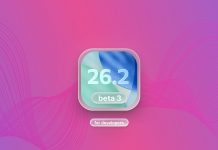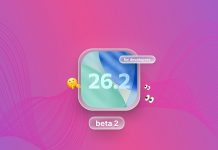
Do you want to know how much storage capacity you have on your iPhone, what’s taking up the most space, and exactly how much space different types of data are using?
Unfortunately, not all storage information is located in one place, so it can be tough to see the complete picture if you don’t know where to look.
To help you, we made a comprehensive guide on how to check iPhone memory using several methods that, altogether, give you a bird’s eye view of your device’s storage space.
Table of Contents
Different Types of Data and Their Storage
Not only are there different types of data present on your iPhone, but there are also different types of storage. The problem is that, most of the time, the data is “scattered” among different storages. To help you untangle this complicated web of information, here’s brief list that breaks down different types of storages you can find on your iPhone and what type of data gets analyzed:
Local device storage: iOS calculates the storage used by applications, mail, the Photos app, iOS itself, and system data. Their total usage is shown alongside your remaining free storage space and the total amount of storage space on the device. See Method 1 and Method 2.
Applications: Application packages are bundles of files that include all the components an iPhone app needs to run, such as assets like sound files, user interface files, etc. Downloaded files (e.g., downloaded Netflix videos) are also included here. Application packages (or simply apps) are shown as part of local device storage, but iOS also analyzes how much space each specific app uses. See Method 4.
In-app storage:Aside from their application packages, some apps also analyze their in-app data independently (which are usually stored in the app’s cloud server). Examples of in-app data are caches and smaller downloaded files, such as chat messages. See Method 5.
iCloud: iCloud storage is analyzed separately from local storage. Its data is composed of files the user (and some applications) chose to store in iCloud servers, such as Drive files, photos and videos, and app-related files. See Method 3.
Miscellaneous storage: Data and storage types fall in one or two of the other categories but are shown in a specific context for purposes other than pure analysis. See Method 6.
6 Ways to Check Storage on an iPhone
In this section, we’ll show you how to check storage usage on your iPhone using 6 different methods. Each method shows you different types of storage information, so we recommend that you try all of them to get a comprehensive view of your device’s memory.
Method 1: Review General Storage Allocation in the iPhone Storage Menu
The iPhone Storage menu is your primary dashboard for reviewing internal storage on your iPhone. It identifies the data types present on your phone, such as Applications, Photos, and iOS files, as well as calculates how much storage space each data type uses.
It also has several functionalities to help you manage storage on your iPhone (though limited), and you can check how many GB your iPhone has in general.
You can find the iPhone Storage menu in the Settings app. Here’s how to get there:
Step 1: Open the Settings app and tap General.
Step 2: In the General menu, select iPhone Storage.
Step 3: At the very top of the iPhone Storage menu, you should see a segmented bar that indicates how your storage space is allocated.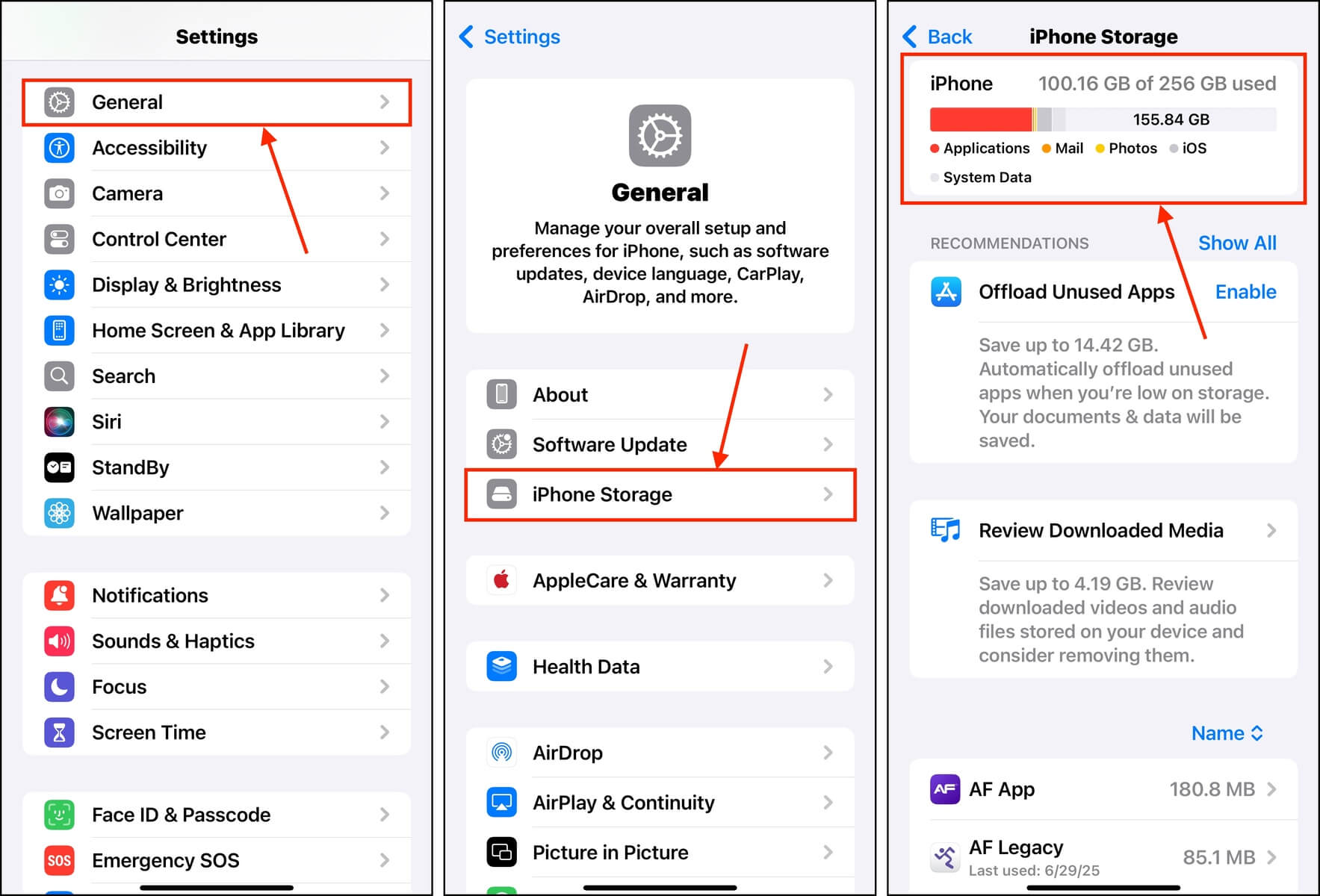
Method 2: Check Synchronized Data in Finder (or iTunes)
Another way to see iPhone storage is by syncing it to your computer via Finder or iTunes. Once Finder or iTunes reads your iPhone, it displays a storage tracker bar that represents the different types of data on your device and how much space they use.
Compared to checking storage usage in the iPhone Storage menu (Method 1), this method provides a “cleaner” snapshot of your device’s storage. This is because the synchronization process may empty out your iPhone’s system caches before it can check iPhone storage capacity.
Meanwhile, the storage tracker in the iPhone Storage menu shows storage consumption during real-time usage (where caches fluctuate and don’t always clear themselves on time).
For a complete list of the different types of data Finder and iTunes displays in the tracker bar, check out the Content categories section on Apple’s support page.
Here’s how to access the storage tracker in Finder:
Step 1: Open Finder and securely connect your iPhone to your Mac using the appropriate cable.
Step 2: Once your iPhone appears in Finder’s sidebar, click it. At the bottom of the window, hover your mouse pointer over the colored sections of the bar to view the different types of data on your device and how much space they take up.
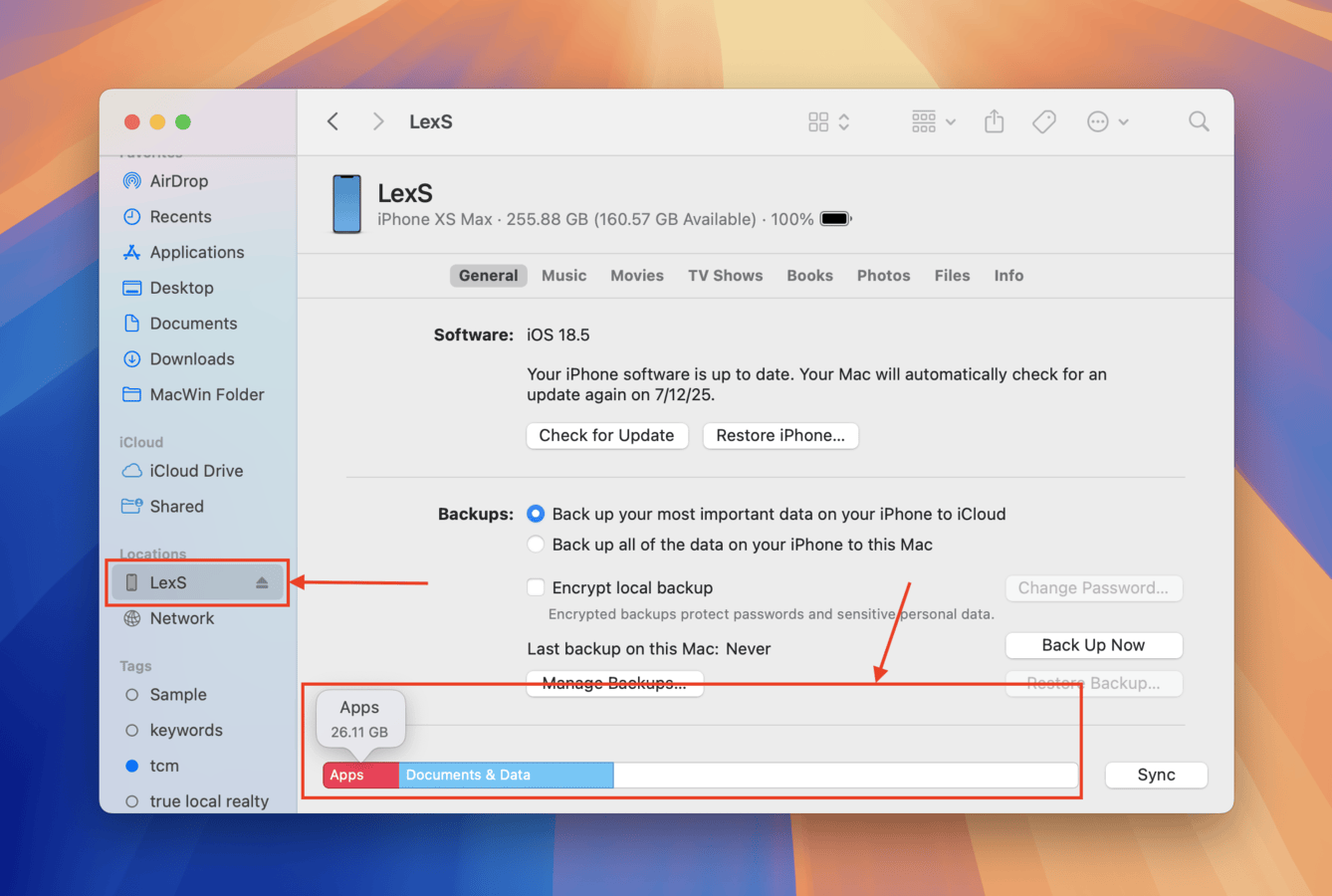
Method 3: Monitor Your Cloud Usage in the iCloud Storage Menu
If you have iCloud enabled on your iPhone, you’ll gain access to a menu in its settings called Manage Storage. This menu breaks down how much iCloud storage space each app uses for its iCloud data. We’ll show you how to find it:
Step 1: Open the Settings app.
Step 2: Tap your Apple ID.
Step 3: In your Apple Account menu, tap iCloud.
Step 4: At the top of the iCloud menu, tap Storage.
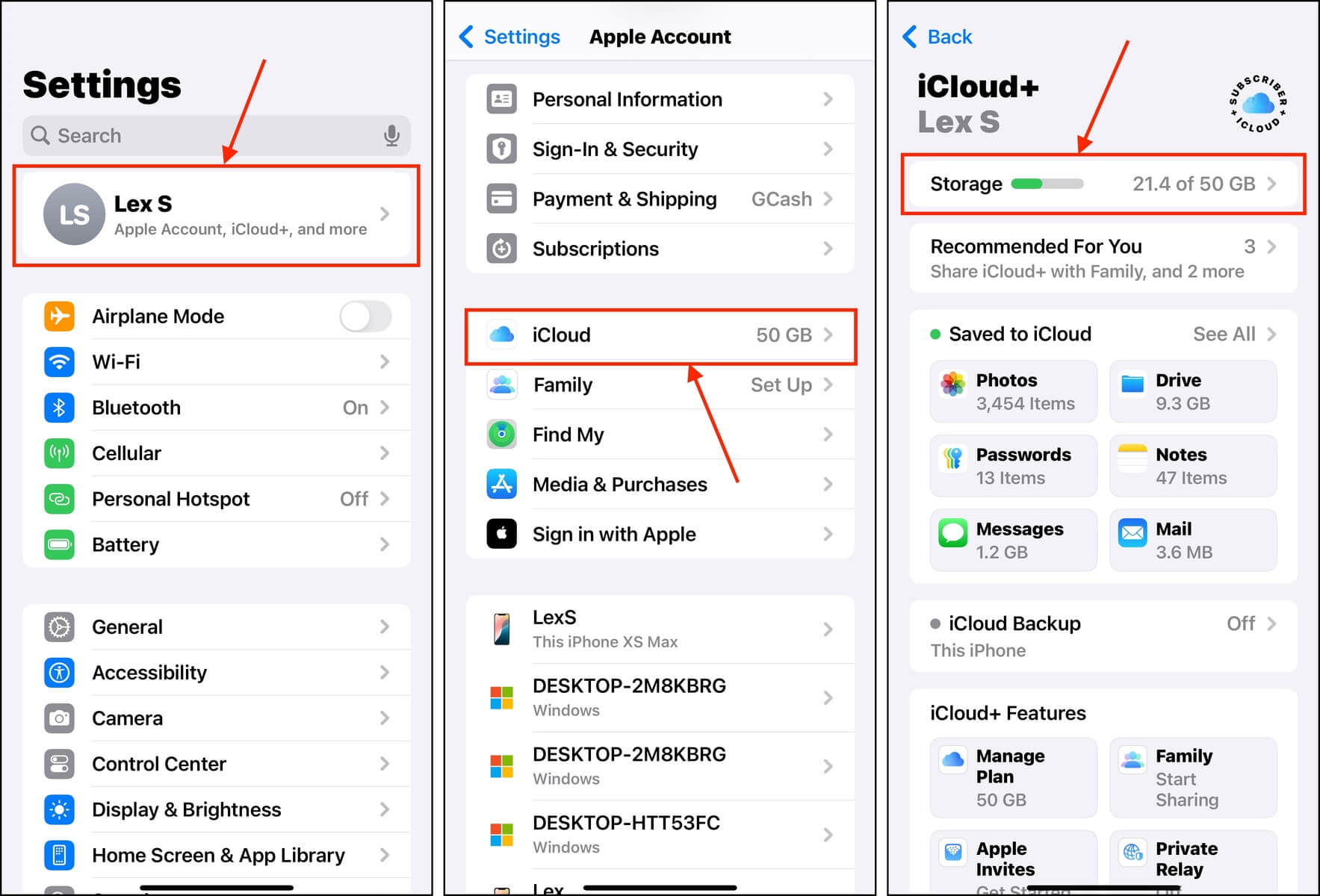
Step 5: In this menu, you can see how much storage space each type of iCloud data uses. Select any app and tap it.
Step 6: Depending on which app you’re viewing, you’ll see more details about its iCloud storage consumption. For example, iCloud Photos also tells you how many photos and videos you have saved to the server.
Method 4: Check Application Data Storage Usage
Some apps have a tiny footprint, while others can reach 20GB and more in size. You can easily find out how much storage space each specific app uses on your device (as well as what type of app data make up those files) through the iPhone Storage menu. Here’s how to find it:
Step 1: Open the Settings app and tap General.
Step 2: In the General menu, select iPhone Storage.
Step 3: Scroll down to the list of apps—you’ll see how much storage space each application is using. For a hierarchical view, you can tap the sorting button and select the Size option.
Step 4: Tap on any app to view a more detailed size breakdown of its app data.
Method 5: Check In-App Download and Storage Settings
Certain apps, especially those with downloadable content, may have their own tool to view storage on an iPhone. While the storage information they collect is usually only relevant to that app, it can still provide you with insights about your usage habits and how it translates into storage consumption.
For example, Telegram’s Storage Usage feature reports the amount of disk space being used by chat content—like photos, videos, and stories. We’ll show you what this menu looks like.
Step 1: Open Telegram (or any app you want to review).
Step 2: In the bottom menu, tap Settings. Then, select Data and Storage.
Step 3: At the top of the Data and Storage menu, tap Storage Usage.
Step 4: Review the page content for information about your Telegram account’s local storage usage.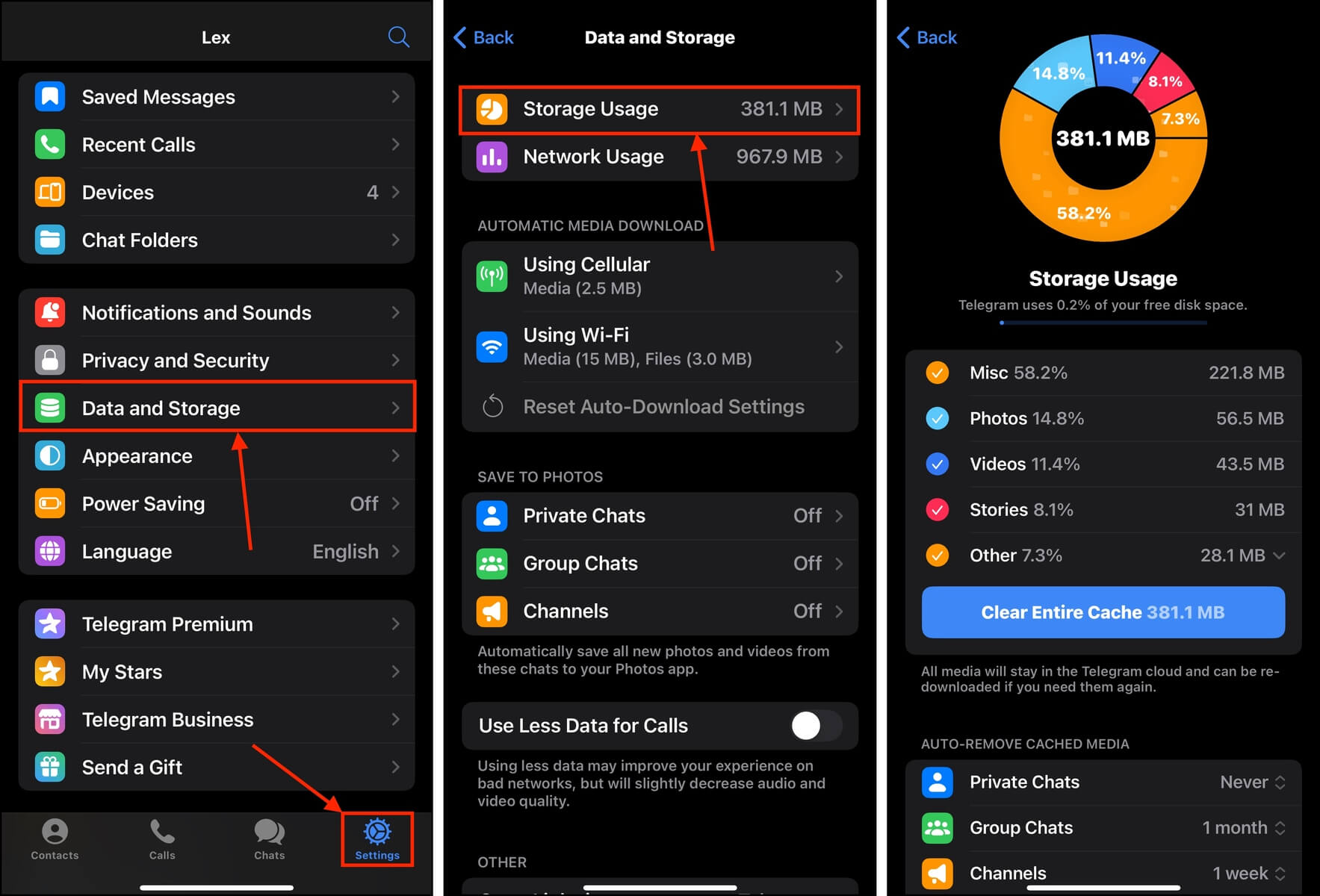
Method 6: Review iPhone Storage Usage With Third-Party Apps
There are a few third-party apps that you can download from the App Store that can analyze and manage iPhone space related to different types of data. This is most commonly found in the niche context of iPhone cleanup apps.
For example, we’ll show you an app called Clever Cleaner: AI Cleanup App, which analyzes
how much of your storage space is being used by photo and video clutter. Namely, it can calculate how much space goes to similar photos, large video files, screenshots, and Live photos.
There are several iPhone cleaning apps with this type of feature, but we chose Clever Cleaner because it’s completely free (with zero ads and no “trial” period) and it provides ample information, like the number of files, total size in gigabytes, and percentage of local storage used (by each type of clutter).
Step 1: Download Clever Cleaner: AI Cleanup App from the iPhone App Store.
Step 2: Open Clever Cleaner and grant full access to your library (don’t worry, it’s safe!).
Step 3:Use the menu at the bottom to view different data types and modes. Here’s an example of my device’s Similars, Heavies, and Screenshots (“Similars” are the duplicate and identical photos in my library, while “Heavies” are the largest media files).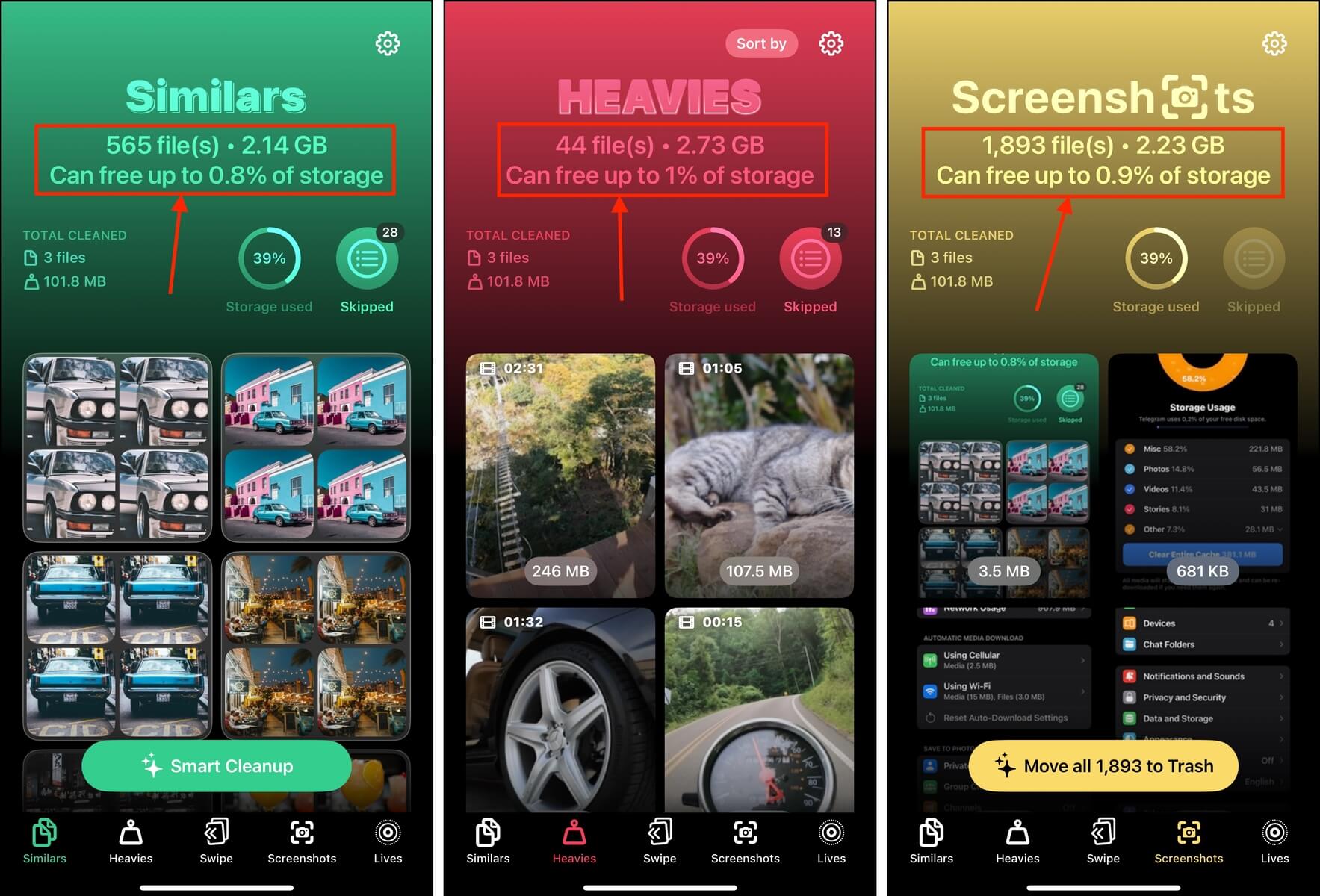
Is Your iPhone Not Reflecting Your Storage Space Accurately?
The various storage menus shown on your iPhone automatically update themselves whenever there are changes to your storage space (such as saving new files or deleting old ones), in order to reflect your device’s capacity accurately.
However, there are cases where this update process gets delayed. There are even cases where deleting an app or file seemingly doesn’t affect storage at all. If either of these cases are happening on your device, check out our guide on why your iPhone storage appears full even after deleting everything.



